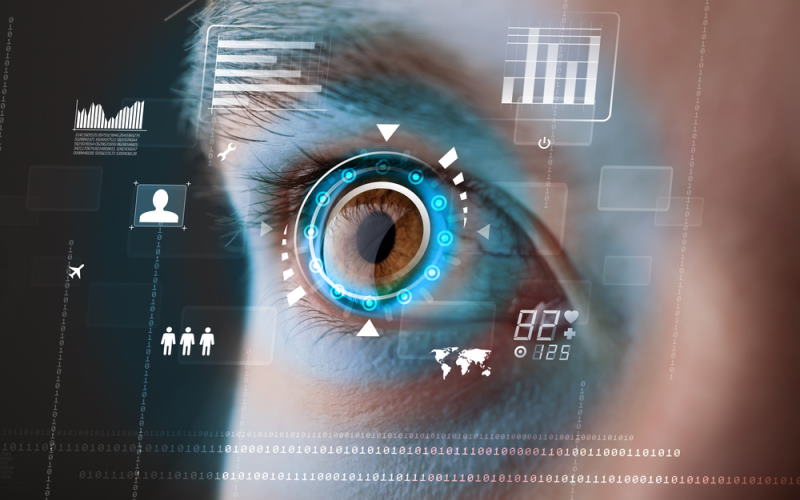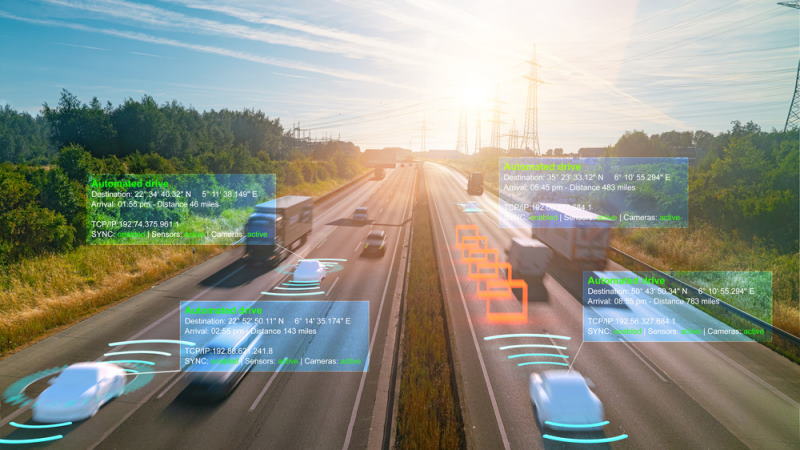
Computer vision (CV) is one of the many subsets of artificial intelligence. It enables computers and systems to glean valuable insights from data such as digital images, videos, and others. First, it processes massive amounts of data using complex algorithms. Then, together with the raw processing power of the machines, CV recognizes patterns and features from the data, learns from them, and makes predictions. Artificial intelligence (AI) gives machines the power to think; computer vision allows them to see, observe, and understand.
Thanks to advances in artificial intelligence and innovations in deep learning and neural networks, the field has taken great leaps in recent years. It has surpassed humans in detecting and labeling objects. Computer vision has undergone a tremendous transformation with advances in AI and computing power. From simple object identification to mapping the terrain of the planet Mars, computer vision has come a long way.
Here are some things to know about computer vision:
How computer vision works
Training an AI, along with its subsets like machine learning (ML), natural language processing (NLP), and computer vision, to name a few, takes a lot of data. AI processes the data and learns to distinguish them and recognize specific images. For example, a programmer must give a lot of cat images and other feline-related images to process to train a computer to identify cats. Computer vision works like this: first acquire, then process, and lastly, understand the image.
The images in the dataset are labeled using an image annotation tool that enables the AI to recognize the images. In addition to this tool, two other technologies are involved in this process: convolutional neural network (CNN) and a subfield of machine learning called deep learning. Image annotation is particularly vital, as the AI performs better if the quality of the annotations is first-rate.
Engineers and programmers use machine learning algorithms to train the computer or machine to analyze and identify images. CNN helps in breaking down the images into pixels. This process labels the pixels and identifies the images with the help of deep learning algorithms.
Uses of computer vision
Computer vision is used in various industries, not just in the tech sector. Some of these fields where computer vision applies include the following:
- Automobile industry
Computer vision enables vehicles to process their surroundings. The car detects and classifies objects with the help of surround cameras. The computer then sends the results to the system, using this data for the vehicle’s autopilot and driver assistance. Computer vision makes path-planning and driving scene perception possible, helping the autonomous car’s decision-making.
Furthermore, computer vision processes the data gathered, recognizing obstacles like traffic signs, other vehicles, pedestrians, and other objects. The program can then determine the safest path to avoid hitting various obstacles.
- In healthcare
Computer vision in healthcare is an indispensable tool, especially now that the available medical data is 90% based on images. The technology provides new and fast methods of diagnosis. It is a vital tool in medical imaging, cancer detection, X-ray analysis, patient monitoring, surgical assistance, etc.
- In facial recognition technology
Facial recognition has many uses, like the tagging feature on social media sites with which many are familiar. Computer vision can also use a user’s face to unlock phones and access bank accounts. Some businesses also use this tech to track customers’ facial expressions to check for customer satisfaction. In retail, facial recognition as a new payment system is rapidly gaining ground.
Computer vision tasks
Essentially, the different computer vision tasks are what make this tech work. The tasks make the computer understand visual data and digital images fed to it. As the tech progressed over the years, scientists organized the seemingly impossible tasks into more manageable tasks. Here are some of the most popular computer vision tasks:
- Image classification
Image classification’s function is to classify a set of images into predetermined classes based on previously classified training data. With this function, the computer analyzes an image and identifies it as belonging to a specific category or label, whether the image is ‘car,’ ‘tree,’ ‘animal,’ etc.
- Object detection
This task allows for identifying, labeling, and locating objects found in a video or image, making counting objects in an image and ascertaining their locations more straightforward. This function is helpful in situations such as assembly lines for detecting and locating damaged machinery and requiring a visit from the maintenance people.
- Object tracking
Once detected, computer vision tracks and follows an object using images captured in video feeds or captured in sequence. The program creates a visual model for the tracked objects and follows the objects in the video. Object tracking also assigns unique labels to the tracked objects; this makes it possible to count distinct objects in the videos.
Object tracking is vital for traffic flow monitoring, medical imaging, and tracking a criminal on a getaway car. Autonomous vehicles also use this CV task for tagging pedestrians, road infrastructures, and other vehicles.

Final thoughts
Computer vision is one of the many subsets of AI. CV and the other subsets enable machines to see and understand images. This ability makes a computer recognize objects in an image, make choices, and provide relevant output.
CV is integral in many industries, like healthcare, automobile, business, etc. In addition, scientists have categorized computer vision tasks into more manageable projects, which helped in advancing the technology.
References:
- Colorado State University Global. (2021, August 9). How Does AI Actually Work? https://csuglobal.edu/blog/how-does-ai-actually-work
- Dickson, B. (2020, February 9). What Is Computer Vision? PCMag.com. https://www.pcmag.com/news/what-is-computer-vision
- International journal of engineering research & technology (IJERT). (2015). Object Detection and Tracking for Traffic Surveillance. https://www.ijert.org/object-detection-and-tracking-for-traffic-surveillance
- Miliard, Mike. (2016, November 30). IBM Watson Health, Merge launch new personalized imaging tools at RSNA. Healthcare IT News. https://www.healthcareitnews.com/news/ibm-watson-health-merge-launch-new-personalized-imaging-tools-rsna
- Nair, V. (2021, June 27). A Conceptual Explanation of Convolutional Neural Networks (CNN’s). Towards Data Science. https://towardsdatascience.com/a-conceptual-explanation-of-convolutional-neural-networks-cnns-ccd2e62f213b
Images Courtesy Adobe Stock
